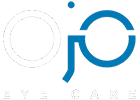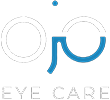Did you know that macular degeneration is the most common cause of vision loss in patients over the age of 55? Did you know that over 16 million Americans have dry eye disease? Although there are hundreds of eye diseases eye doctors will treat throughout their careers, the most common ones we see in Ogden are dry eye syndrome, cataracts, glaucoma, maculardegenerationand diabetic retinopathy. In fact, these are the most common types of eye diseases throughout the entire United States!
Let’s learn more about each condition:
- Dry Eye Syndrome: Dry eye is a condition that occurs when your eyes either do not create enough tears, or create the wrong type of tears to adequately moisturize the front surface of the eye. This results in feelings of grittiness, redness, burning, and watering. Depending on the severity of dryness, it can be treated with simple self care strategies, consistent artificial tear use, prescription medications, or various in-office treatments.
- Cataracts: Cataracts are an age-related condition that occurs as proteins inside the clear lens of the eye begin to break down and cause cloudiness. Symptoms include blurred vision, halos or starbursts around lights at nighttime, and a noticeable but gradual change in color contrast. While avoiding smoking and sun exposure can help slow down the progression of cataracts, surgical intervention is the only possible treatment.
- Glaucoma: Glaucoma is a progressive disease that affects the optic nerve, which connects your eye to your brain. As glaucoma progresses, it damages your optic nerve resulting in peripheral visual field loss, and eventually can cause complete and permanent blindness. There is NO cure for glaucoma, and the goal of treatment is to prevent further damage and vision loss. This is typically accomplished by having the patient use daily eye drops, but in some cases may require surgery.
- Macular Degeneration: Macular degeneration affects the macula, which is an area of the retina responsible for clear central vision, color vision, and ability to see fine details. The early stage of macular degeneration typically has no symptoms and is only detectable through a dilated retinal examination and/or OCT imaging. Advanced stages of the disease will begin to affect the central area of vision, making it difficult to recognize faces, read, and drive. As with glaucoma, macular degeneration has NO cure, so treatment is designed to prevent further damage. This may range from daily vitamins with at-home vision monitoring to medication injected directly into the eye.
- Diabetic Retinopathy: Diabetic retinopathy is a complication that occurs only in patients who have diabetes, particularly those who have uncontrolled diabetes. Excessive sugar in the bloodstream causes blood vessels to bulge and break, resulting in bleeding and fluid build-up inside of the eye. In many mild cases, this condition is only detected through a dilated retinal examination. In advanced cases, patients may notice blurred vision, dark or missing areas of their vision, or complete vision loss. Treatment for diabetic retinopathy may only require frequent monitoring and medication changes, but if severe enough, may require laser treatment, injections or surgery.
The most frightening thing about these 5 most common eye problems that we see is that most of them have no symptoms until the advanced stages and 3 of the 5 can cause permanent blindness if left untreated. Fortunately, we can detect signs of these conditions through routine eye examinations, and intervene with proper treatment before vision loss progresses! Be sure to prioritize your vision and contact us today to schedule an appointment!


